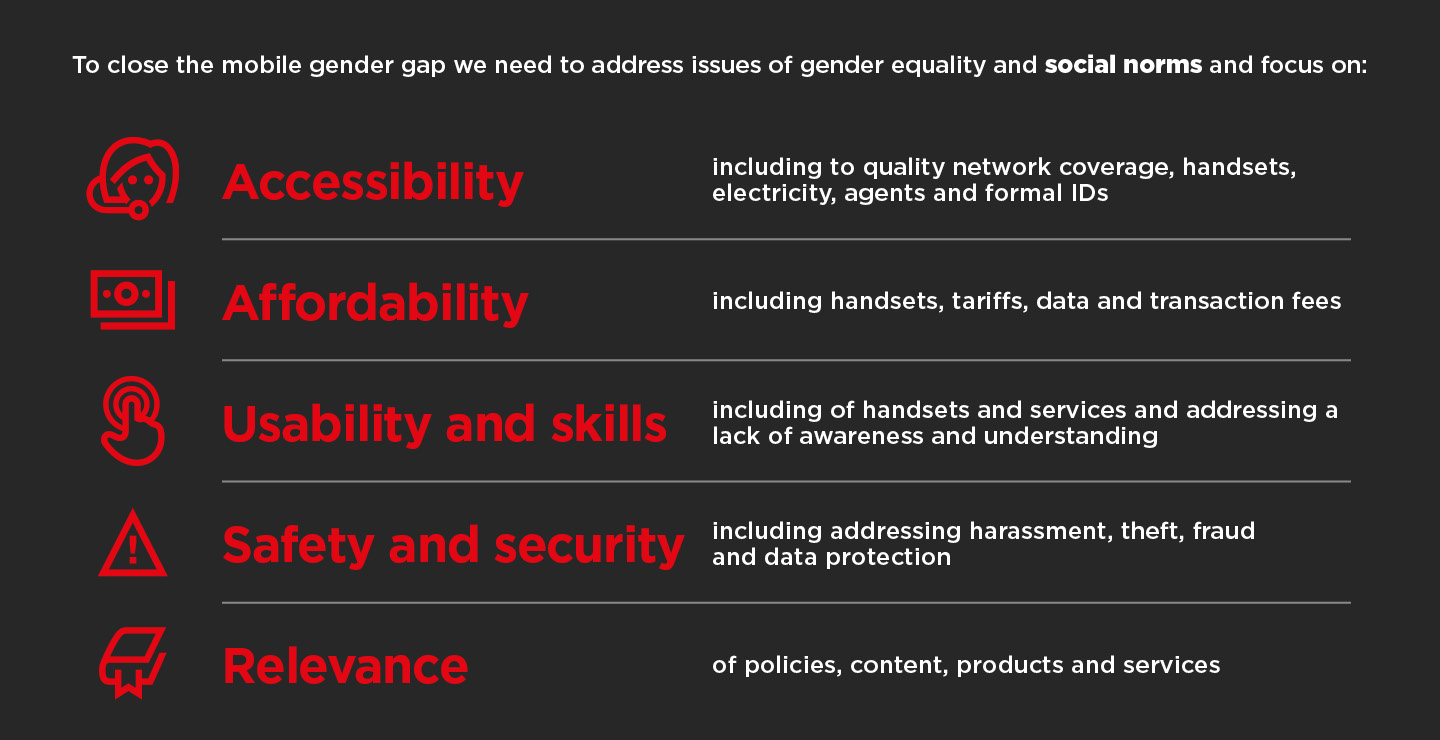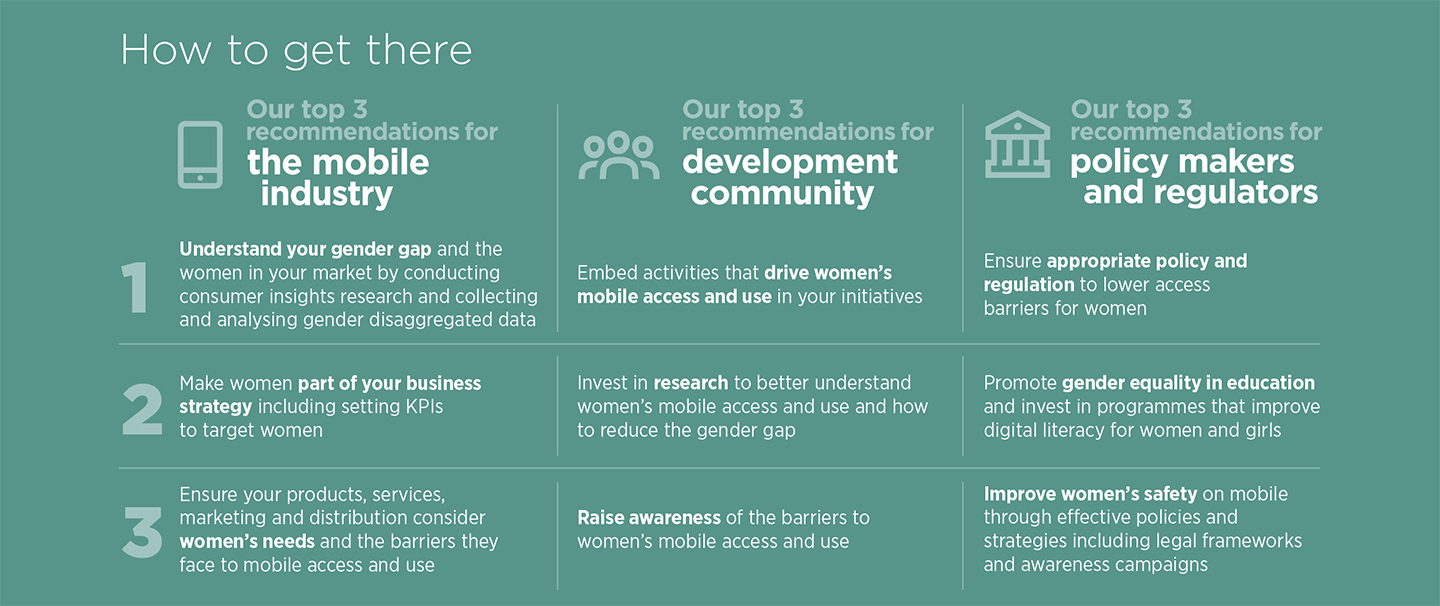Mobile has the power to transform lives. It can help empower women, making them more connected and safer, and providing access to information, services and life-enhancing opportunities, such as health information and guidance, financial services and employment, often for the first time. However, despite increases in access, there remains a significant gender gap in mobile phone ownership and use, particularly for more transformational services. It is critical that we work together to address this issue to advance women’s digital and financial inclusion for women and realize this significant commercial and socio-economic opportunity. We highlight this issue and practical actions that can be taken to address the mobile gender gap on our website.
The opportunity
In today’s increasingly connected world, women are being left behind. Our 2018 report on the mobile gender gap estimates that women in low- and middle-income countries are, on average, 10% less likely to own a mobile phone than men, which translates into 184 million fewer women owning mobile phones. [1] Even when women own a mobile phone, they report using phones less frequently and intensively than men, especially for transformative services such as mobile internet, further widening the divide. We estimate that women are on average 26% less likely to use mobile internet than men and, according to the latest findings from the World Bank’s Global Findex database, women in these markets are on average 33% less likely to use mobile money.
This gender gap is also wider in certain parts of the world. For instance, women in South Asia are 26% less likely to own a mobile than men and 70% less likely to use mobile internet. The rural gap is almost always wider – even when there is no urban gap at all. In Brazil, for example, the mobile internet gender gap is 32% in rural areas compared with just 2% in urban areas.
Addressing this gender gap can deliver digital and financial inclusion for women and transform lives. It also represents a significant opportunity business and society, while also contributing to the achievement of the UN Sustainable Development Goals. However, the mobile gender gap is not going to close on its own. Its root causes are driven by a complex set of social, economic and cultural barriers. Targeted intervention is needed by industry, policy makers, the development community and other stakeholders to address the barriers faced by women.
What is needed
To address the mobile gender gap, there is a need for:
- Gender-disaggregated data on mobile access and use to gain a better understanding of relevant contexts. Gender-disaggregated data is currently limited, despite such data being critical to understanding and measuring the gender gap and informing policy and business choices that can help bridge this gap.
- The integration of a gender perspective in relevant policies and strategies. Strategies, policies, plans and budgets that explicitly address women’s needs, circumstances, capabilities and preferences are essential if governments, businesses and other stakeholders are to tackle the digital gender gap effectively.
- A focus on addressing the barriers to women’s access to and use of the mobile. We need to address issues of gender equality and social norms, as well as focusing on accessibility, affordability, safety and security, usability and digital skills, and the availability of relevant content, applications and services.
Coordinated action by many different stakeholders working together to address the digital gender gap. The barriers preventing women from accessing and using mobile phones are complex, diverse and inter-related and they can not be addressed in isolation of each other. They require action by and cooperation between all stakeholders.
It is important to focus on five key barriers:
Social norms and disparities between men and women in terms of education and income influence women’s access to and use of mobile technology, and often contribute to women experiencing these barriers more acutely than men.
How do we get there
Effective, tangible and measurable action is needed from a wide range of different stakeholders to overcome the digital gender gap and ensure that women can use mobile services.
Our top three recommendations for different stakeholders for addressing the mobile gender gap and accelerating digital and financial inclusion are:
We call on all stakeholders to take action. It’s not a simple task, but it is imperative that we meet the challenge head-on to ensure that women are not being left behind. When women thrive, societies, businesses and economies thrive.
[1] ‘Mobile’ or ‘mobile phone’ ownership refers to personally owning a SIM card, or a mobile phone which does not require a SIM, and using it at least once a month.



